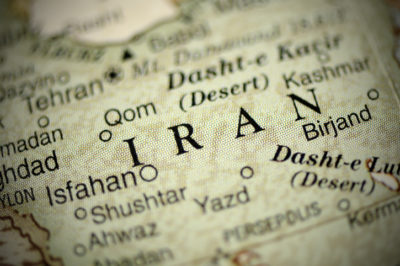In the past ten weeks, Iran has killed two Americans. Tehran would like to kill many more.
A new report to Congress issued from the State Department recently showed that former Secretary of State Mike Pompeo and former Special Representative for Iran Brian Hook remain under “serious and credible threat” of assassination from the Iranian regime. This is severely taxing the Diplomatic Security Service, which is tasked with protecting the former diplomats. In total, nearly a dozen senior U.S. officials and prominent exiled dissidents are living under a sustained threat of attack. The U.S. needs to take decisive action to restore deterrence and prevent further American deaths.
Earlier this year, the Department of Justice revealed chilling details of an Iranian plot to kill former national security adviser John Bolton. In January 2022, national security adviser Jake Sullivan announced that efforts to attack U.S. citizens would be met with “severe consequences.” Whatever threats that may have been conveyed privately to Iran were clearly insufficient to change Iran’s approach, both abroad and at home. On Nov. 16, Secretary of Homeland Security Alejandro Mayorkas warned that “the Iranian regime across multiple vectors has become more aggressive, more brazen, and more dangerous” over the last 18 months.
While Iran has not yet been able to carry out assassinations on American soil, it is killing U.S. citizens overseas at a worrying pace. On Sept. 28, Iran launched a salvo of ballistic missiles and suicide drones into Iraqi Kurdistan in a brazen attack that killed 14 civilians. Among the dead was U.S. citizen Omar Mahmoudzadeh. While the State Department condemned the attack, there was no military response from the U.S. government to actually impose any consequences for it.
Then, on Nov. 7, U.S. citizen Stephen Troell was gunned down on the streets of Baghdad. An Iranian-backed militia group Ashab al Kahf claimed responsibility. This group is trained, equipped, and operated by Iran’s Islamic Revolutionary Guard Corps (IRGC). The killing should thus be treated as a direct attack by the Iranian regime, who likely authorized it in the first place.
President Bill Clinton demonstrated the correct response to this type of challenge when, in 1993, he ordered 23 Tomahawk cruise missiles fired at the Iraqi Ministry of Intelligence’s headquarters. Clinton took that action in response to Iraqi attempts to assassinate former President George H.W. Bush. Clinton’s actions sent a firm message that such plots against Americans wouldn’t be treated with impunity. President Joe Biden should now take a similar action: he could order missiles to be fired at the headquarters of the IRGC or at the Ministry of Intelligence in retaliation for their plots. Another possible target would be to sink the Saviz, an IRGC intelligence vessel that supports Iran’s terror operations around the Persian Gulf. These responses should then be clearly messaged as the first of more to come should Iranian assassination plots persist.
The U.S. government’s first responsibility is to provide for the defense of its citizens. No American who heeds the call of public service should have to live for years under the threat of assassination by a foreign power, much less while living in the U.S. with their family. Biden must take action now to end these despicable Iranian plots.
Gabriel Noronha is a fellow at JINSA’s Gemunder Center for Defense and Strategy.
Originally published in The Washington Examiner.

